

Quadracci Pavilion
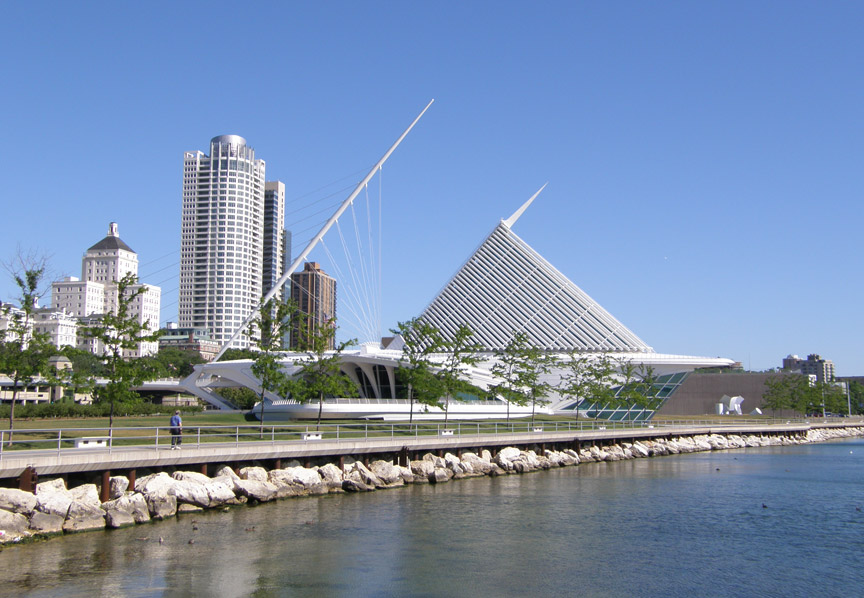
Quadracci Pavilion
wings closed
The first Calatrava-designed building to be completed in the United States, the Quadracci Pavilion incorporates both cutting-edge technology and old-world craftsmanship.
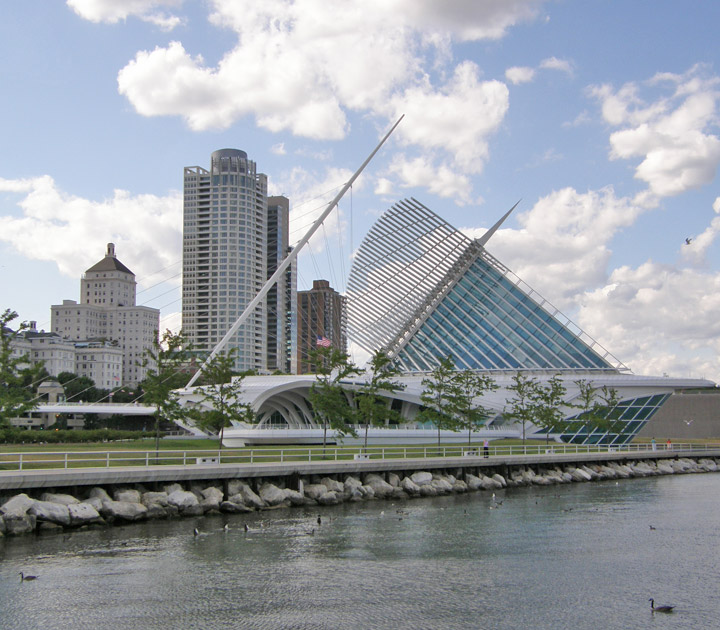
Quadracci Pavilion
wings open
“The heroic design by Santiago Calatrava gives the Milwaukee Art Museum an artistic identity that reflects the greatness of our collections inside and creates a world-class landmark for Milwaukee that will further the vibrant cultural history of this city,” said Gordon, Milwaukee Art Museum Director.
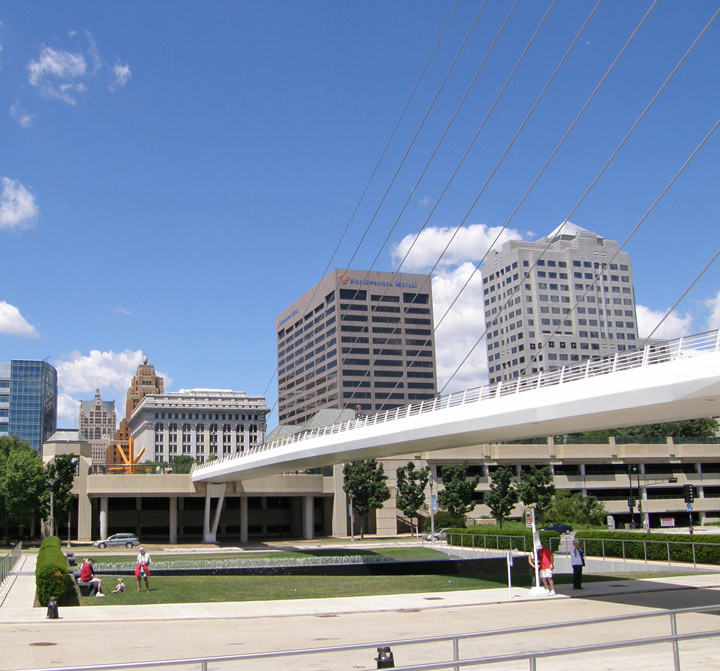
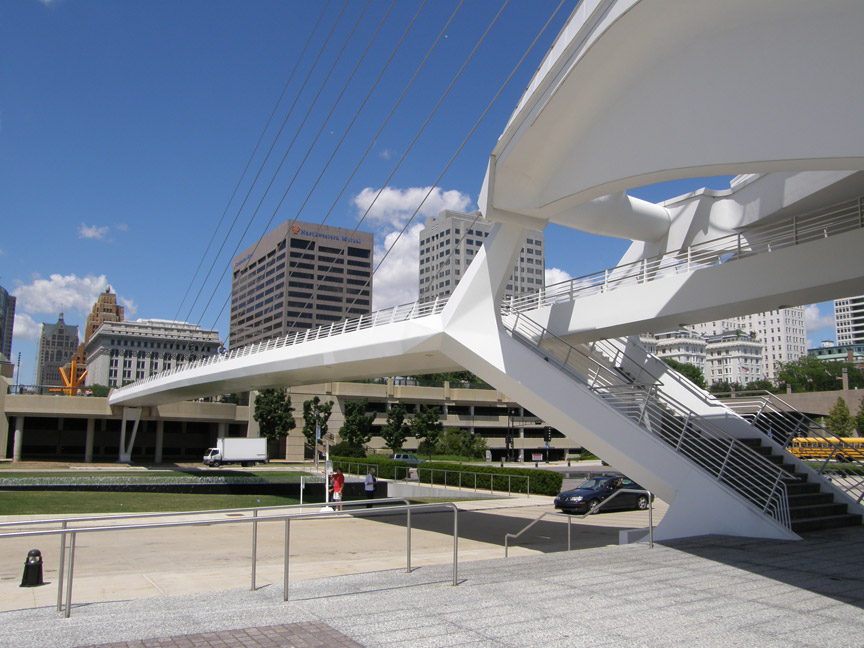
Reiman Bridge
Signature elements of the Calatrava design include the Reiman Bridge, a 250-foot-long suspended pedestrian bridge that links downtown Milwaukee directly to the lakefront and the Museum. The bridge features a distinctive 200-foot angled mast with cables and reflects Calatrava’s unique experience in bridge design throughout Europe.
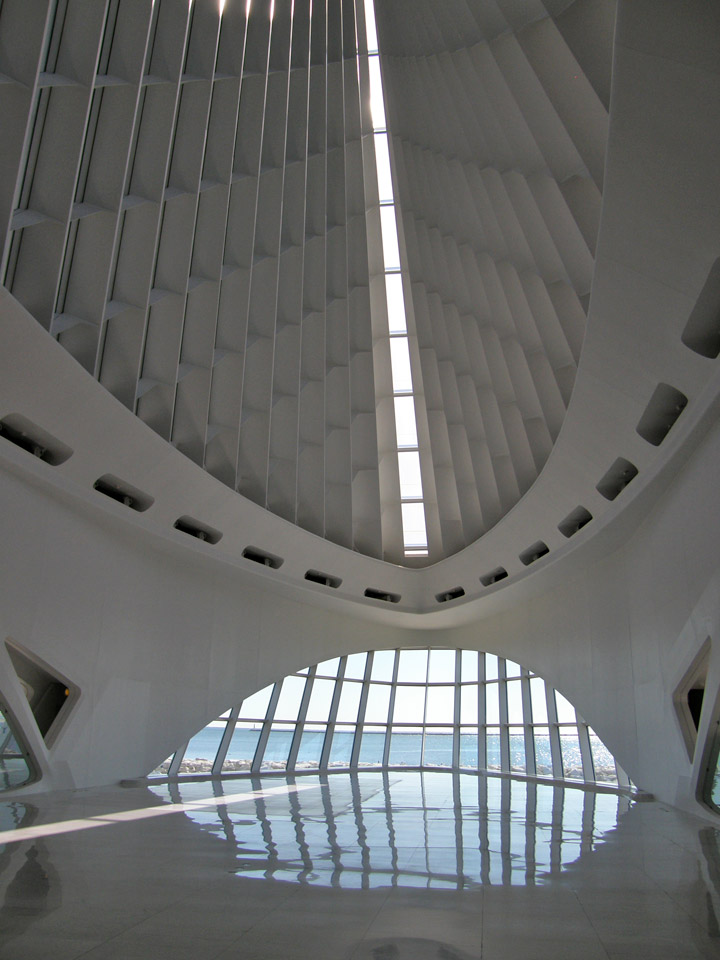
Windhover Hall
The Museum’s main entrance leads into a parabolic-shaped, glass-enclosed Windhover Hall with a 90-foot high ceiling.
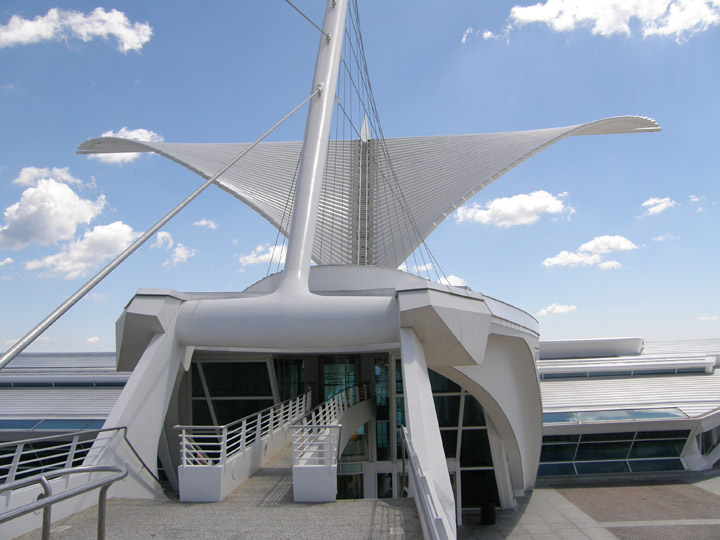
Burke Brise Soleil
The Burke Brise Soleil, the moveable, wing-like sunscreen comprised of 72 steel fins, rests on top of the glass-enclosed reception hall. Major visitor amenities include an auditorium, an expanded Museum Store, a café, a terrace and an underground parking garage.

entrance to underground parking
The Museum’s expansion cost approximately $121 million for the Santiago Calatrava-designed Quadracci Pavilion, The Cudahy Gardens, the endowment and the renovation of the Kahler/Slater building’s Collection galleries.
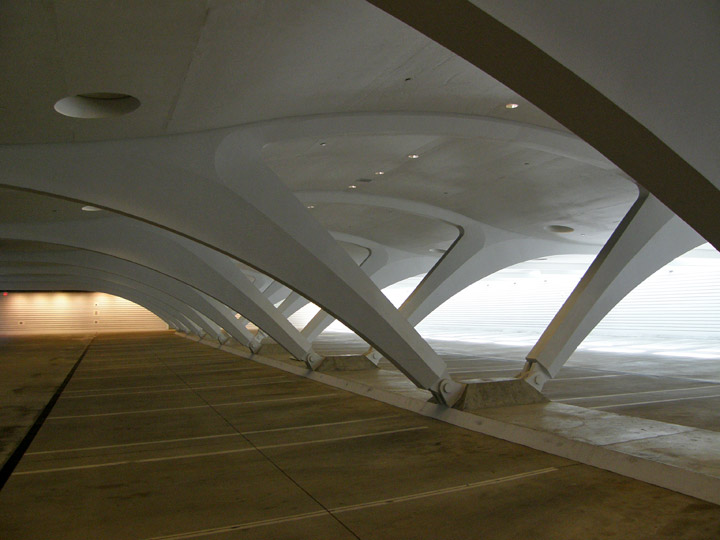
underground parking garage
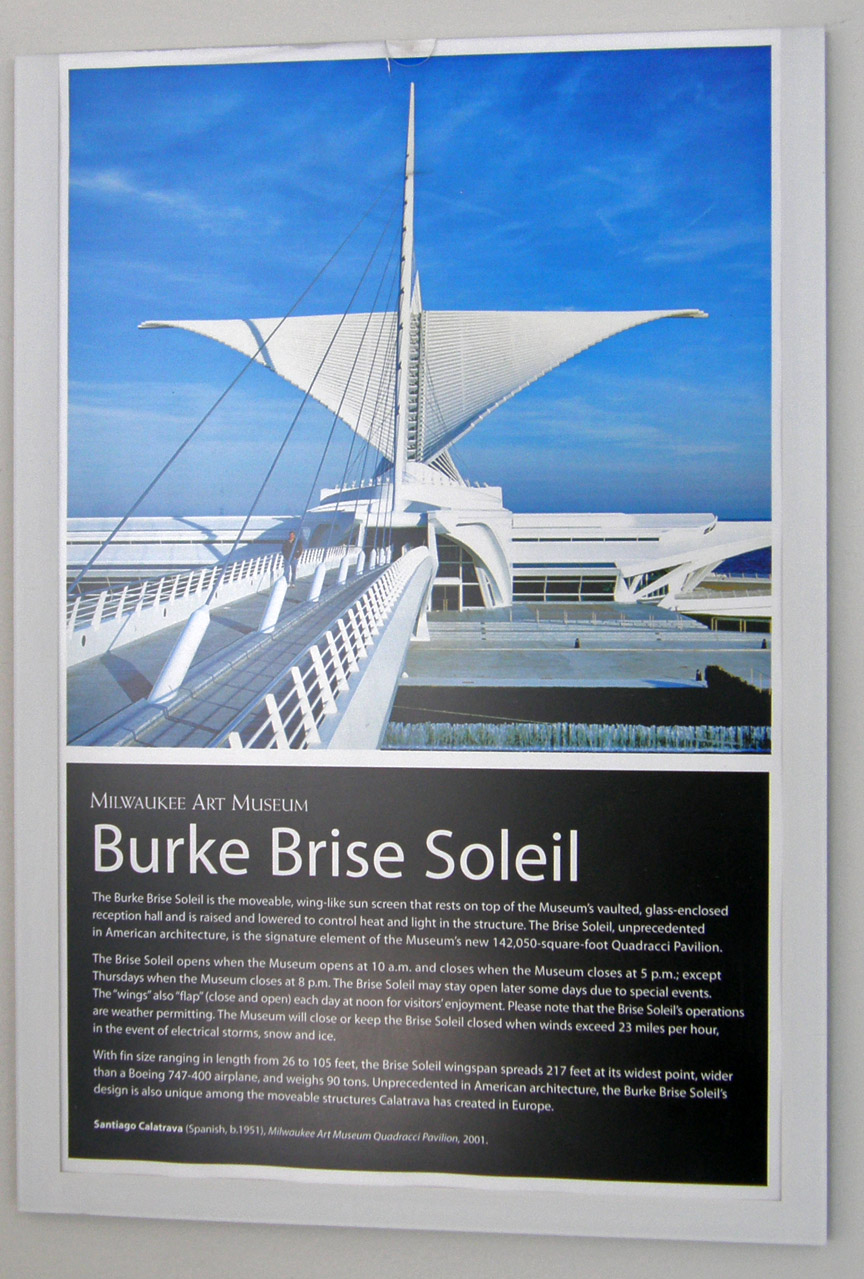
Brise Soleilil
The Brise Soleil opens when the Museum opens at 10 a.m. and closes when the Museum closes at 5 p.m.; except Thursdays when the Museum closes at 8 p.m. The Brise Soleil may stay open later some days due to special events. The “wings” also “flap” (close and open) each day at noon for visitors’ enjoyment.
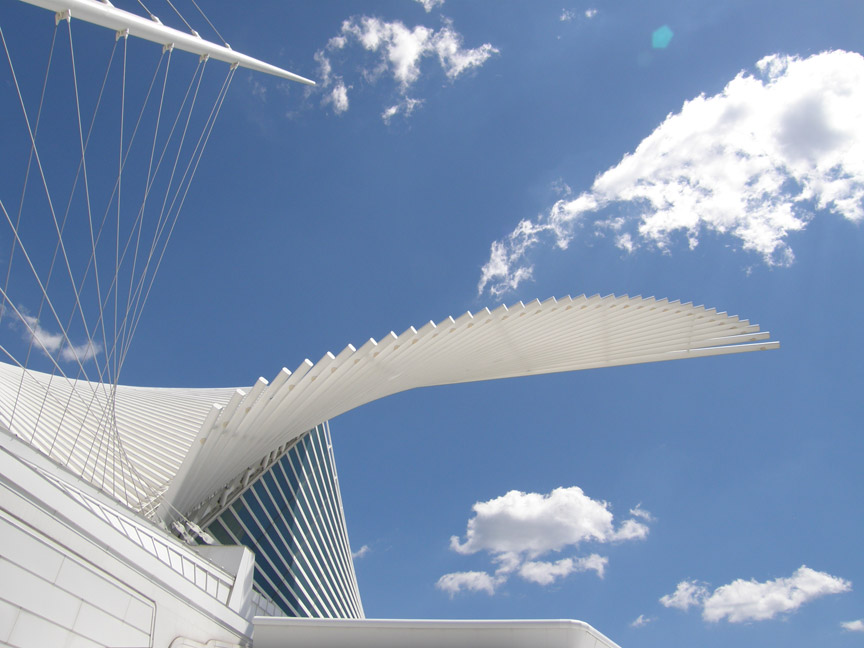

the wings
With fin size ranging in length from 26 to 105 feet, the Brise Soleil wingspan spreads 217 feet at its widest point, wider than a Boeing 747-400 airplane, and weighs 90 tons. Unprecedented in American architecture, the Burke Brise Soleil’s design is also unique among the moveable structures Calatrava has created in Europe.
Santiago Calatrava
Architect, artist, and engineer Santiago Calatrava was born on July 28, 1951, in Valencia, Spain. His background was eclectic. Calatrava is an aristocratic name, passed down from a medieval order of knights. The family on both sides was engaged in the agricultural export business, which gave them an international outlook that was rare during the Franco dictatorship.
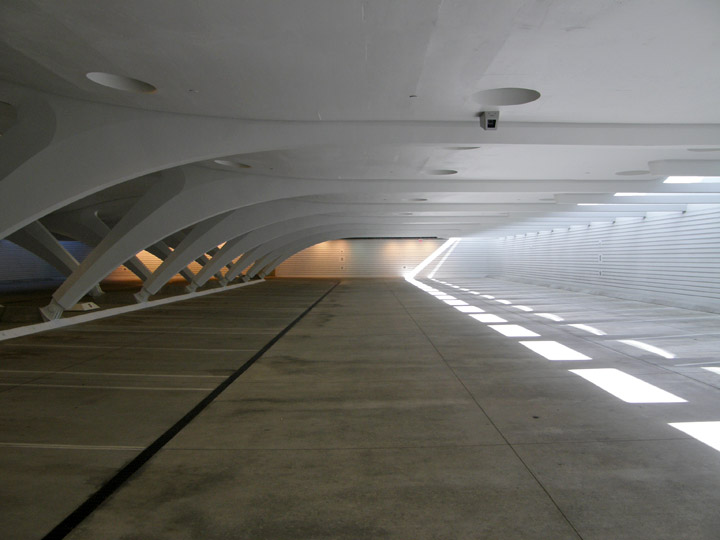
underground parking
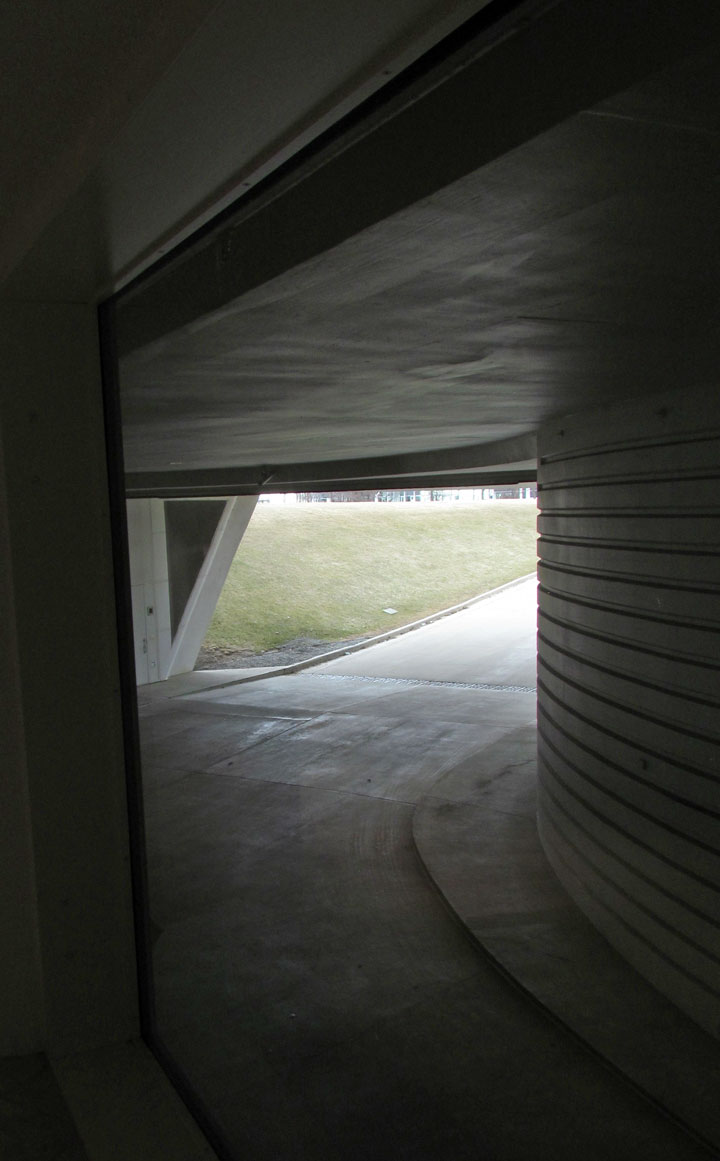

entrance from parking
Calatrava attended primary and secondary school in Valencia. From the age of eight, he also attended the Arts and Crafts School, where he began his formal instruction in drawing and painting. When he was thirteen, his family took advantage of the recent opening of the borders and sent him to Paris as an exchange student. He later traveled and studied in Switzerland as well. Upon completing high school in Valencia, he went to Paris with the intention of enrolling in the Ecole des Beaux-Arts; but since he arrived in June 1968, he found his plan was unworkable. He returned to Valencia and enrolled in the Escuela Tecnica Superior de Arquitectura, a relatively new institution, where he earned a degree in architecture and took a post-graduate course in urbanism. While at the school, he also undertook independent projects with a group of fellow students, producing two books on the vernacular architecture of Valencia and Ibiza.
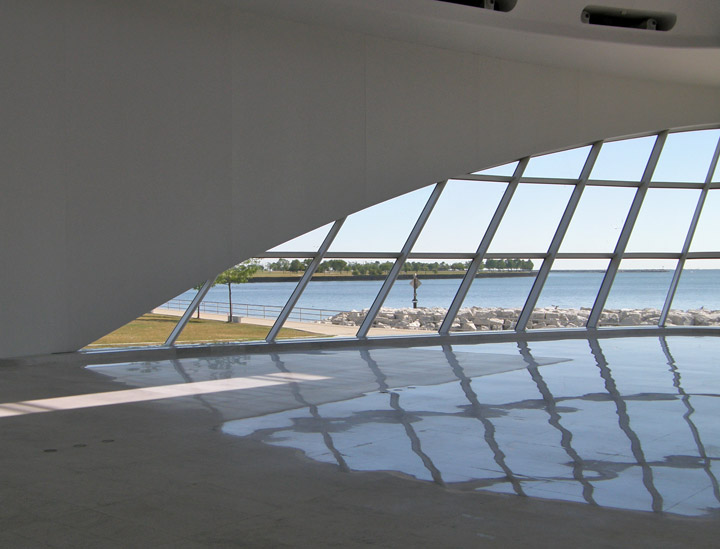
Attracted by the mathematical rigor of certain great works of historic architecture, and feeling that his training in Valencia had given him no clear direction, Calatrava decided to pursue post-graduate studies in civil engineering and enrolled in 1975 at the ETH (Federal Institute of Technology) in Zurich. He received his Ph.D. in 1979. It was during this period that he met and married his wife, who was a law student in Zurich.
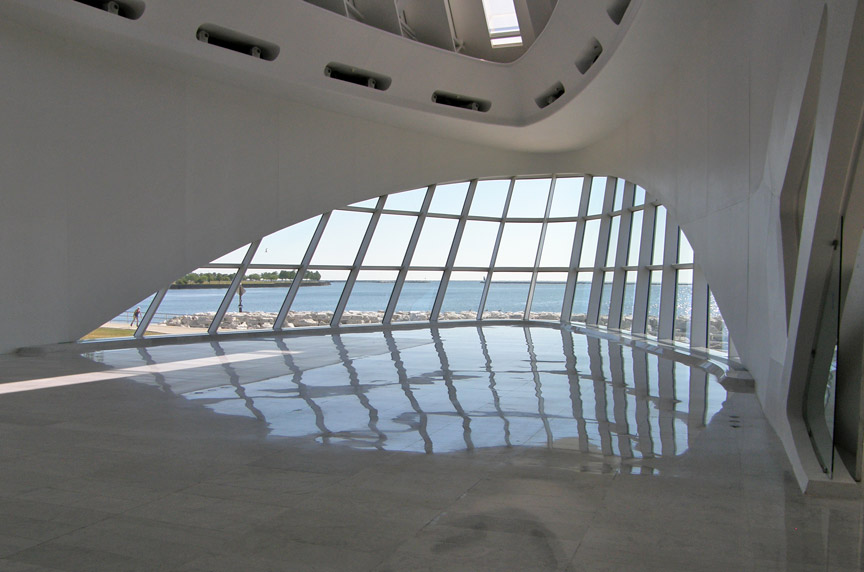
After completing his studies, Calatrava took a position as an assistant at the ETH and began to accept small engineering commissions, such as designing the roof for a library or the balcony of a private residence. He also began to enter competitions, believing this was his most likely way to secure commissions. His first winning competition proposal, in 1983, was for the design and construction of Stadelhofen Railway Station in Zurich, the city in which he established his office.
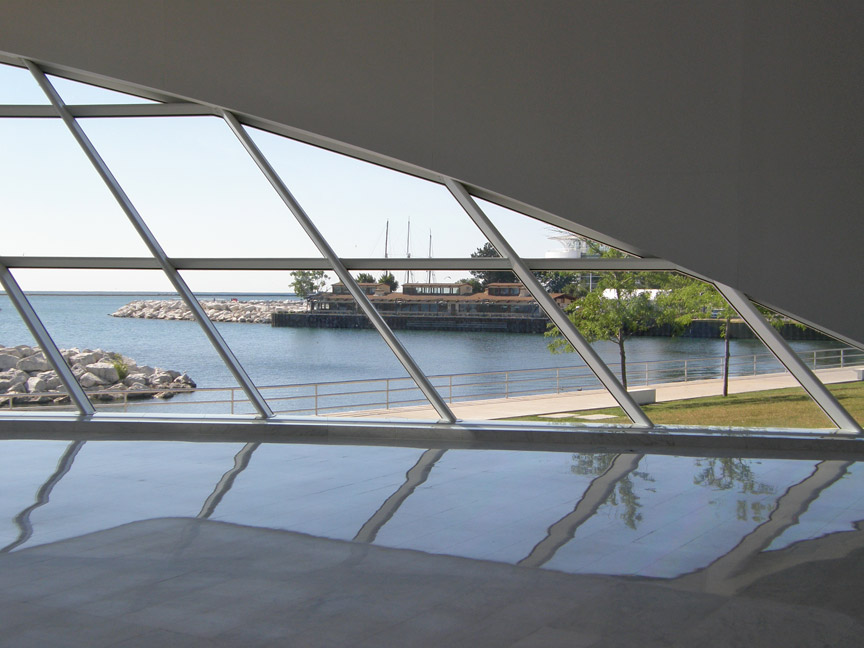
view to the Pieces of Eight restaurant on the lake front
In 1984, Calatrava, designed and build the Bach de Roda Bridge, commissioned for the Olympic Games in Barcelona.
Photo of the Bach de Roda Bridge
This was the beginning of the bridge projects that established his international reputation. Among the other notable bridges that followed were the Alamillo Bridge and viaduct, commissioned for the World’s Fair in Seville (1987-92); Campo Volantin Footbridge in Bilbao (1990-97); and Alameda Bridge and underground station in Valencia (1991-95).

dining area
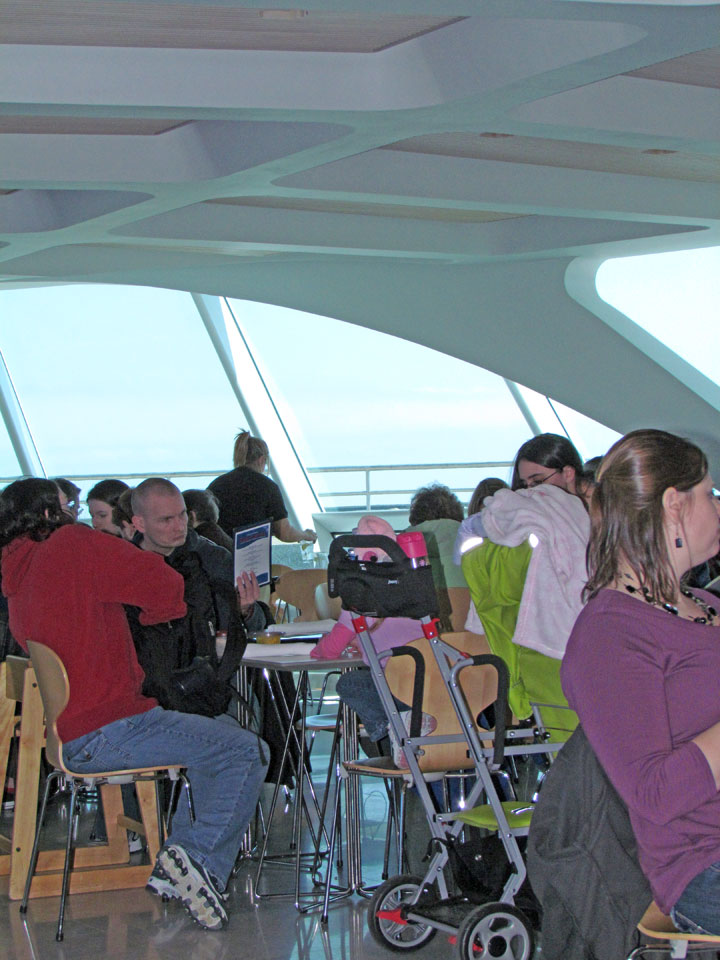
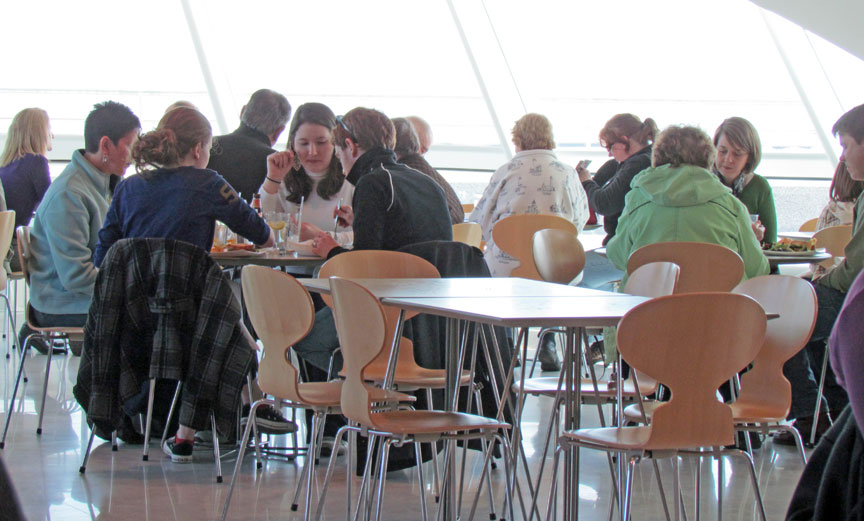
Calatrava established his firm’s second office, in Paris, in 1989, when he was working on the Lyon Airport Station (1989-94). He opened his third office, in Valencia, in 1991 to facilitate work on a competition, a very large cultural complex and urban intervention, the City of Arts and Sciences, Valencia (ongoing). Other large-scale public projects from the late 1980s through the mid-1990s include the BCE Place mall in Toronto (1987-92); the Oriente railway station in Lisbon (1993-98, commissioned for Expo ’98); and the winning proposal in the design competition to complete the Cathedral of St. John the Divine in New York City (1991), a project that has not been realized.
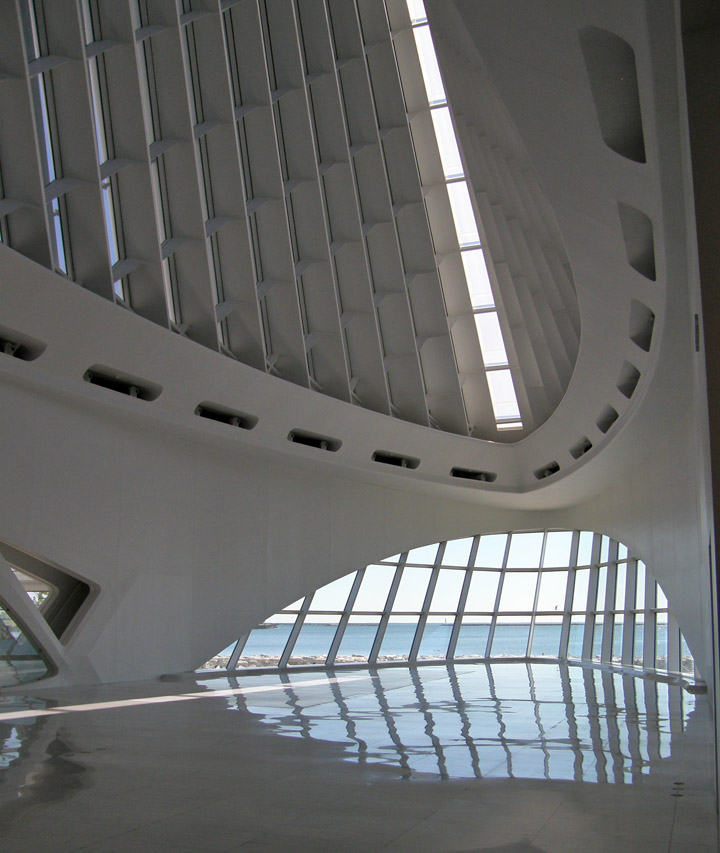
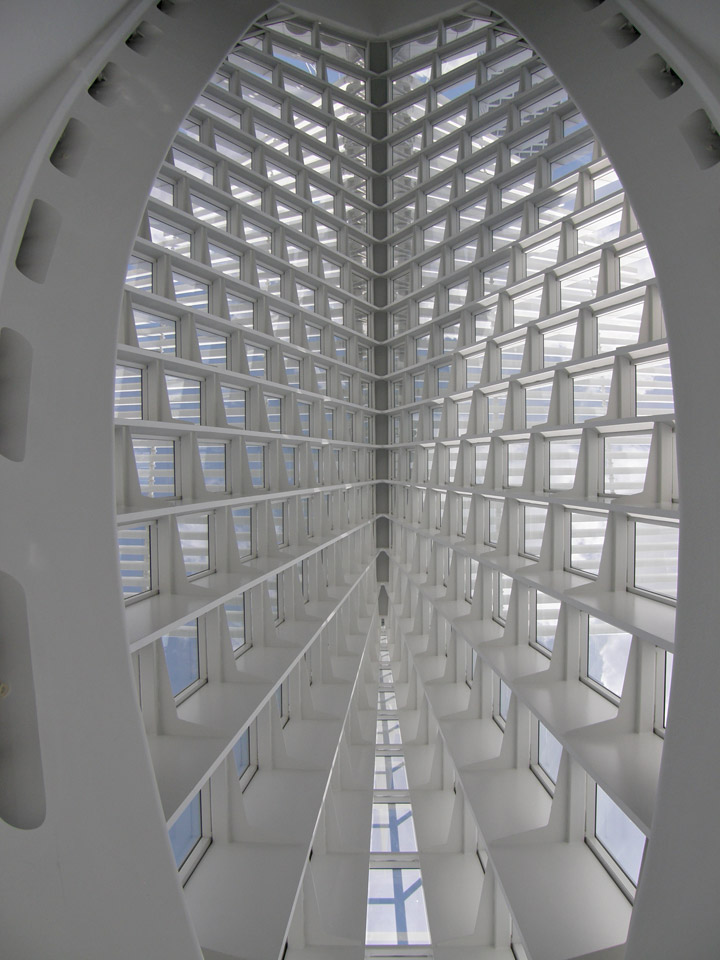
interior of the Windhover Hall
Exhibitions of Calatrava’s work were first mounted in 1985, with a showing of nine sculptures in an art gallery in Zurich. A new stage in recognition was marked by two solo exhibitions: a retrospective at the Royal Institute of British Architects, London, in 1992, and the exhibition Structure and Expression at The Museum of Modern Art, New York, in 1993. The latter exhibition included an installation in the museum’s Sculpture Garden of Shadow Machine, a large-scale sculpture with undulating concrete “fingers.” The most complete exhibition yet mounted of his work was Santiago Calatrava: Artist, Architect, Engineer, presented at the Palazzo Strozzi in Florence, Italy (2000- 2001). Similar exhibitions were mounted in 2001 in Dallas, Texas (to inaugurate the new Meadows Museum) and in Athens, at the National Gallery, Alexandro Soutzos Museum.
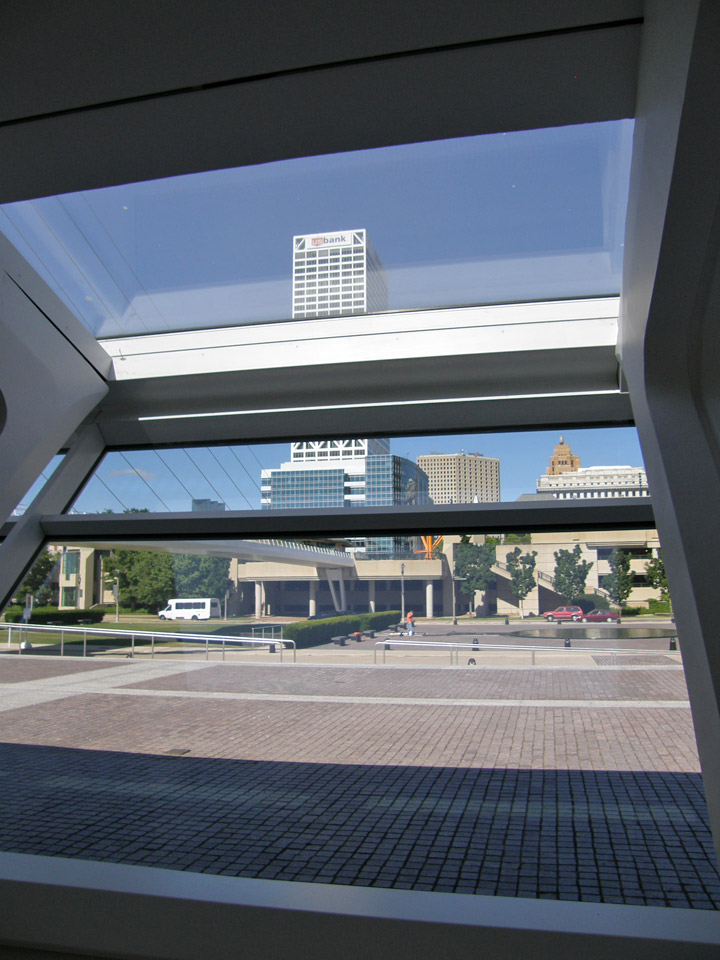
view of the US Bank building from the galleria
Major projects that were recently inaugurated include Sondica Airport, Bilbao (2000); The Bridge of Europe, Orléans, France (2000); the Bodegas Ysios winery in Laguardia, Spain (2001); Calatrava’s first building in the United States, the acclaimed expansion of the Milwaukee Art Museum (2001); Blackhall Place Bridge, Dublin, Ireland (2003) and the Tenerife Opera House, Santa Cruz, Canary Islands (2003). Among the projects that are currently coming to completion are Petach Tikvah Bridge, Tel Aviv, Israel (spring 2003); Quatro Ponte sul Canal Grande, Venice, Italy (early 2004); Turtle Bay Bridge, Redding, California (summer 2004); the Athens Olympic Sports Complex (summer 2004); and the Valencia Opera House (2004), the last major building in his City of Arts and Sciences.
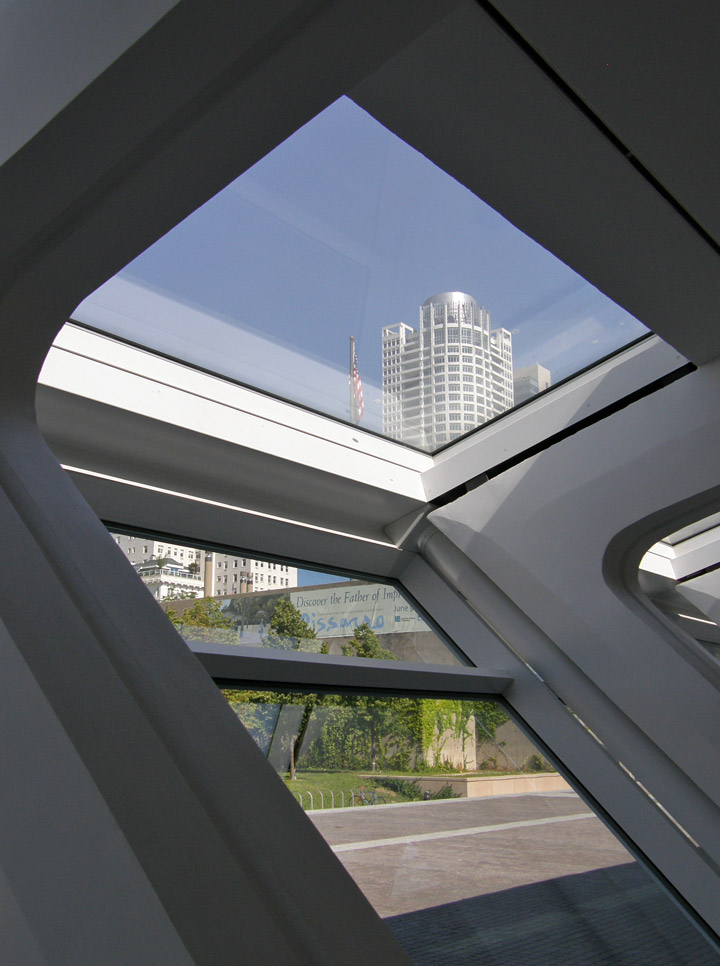

Among his major recent commissions, Calatrava has been selected to design Christ the Light Cathedral for the Roman Catholic Diocese of Oakland, California; and Symphony Center for the Atlanta Symphony Orchestra in Atlanta, Georgia.
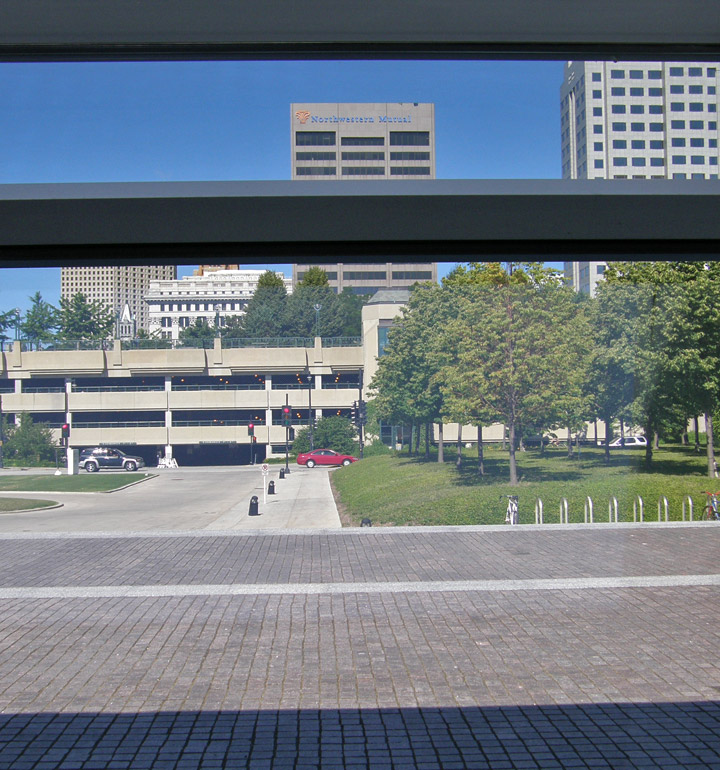
view of the Northwestern Mutual insurance building from the galleria
Honors and awards given to Santiago Calatrava include the Gold Medal of the Institute of Structural Engineers, London; the City of Toronto Urban Design Award; designation as a Global Leader for Tomorrow by the World Economic Forum in Davos; the Creu Sant Jordi, Barcelona; the Gold Medal for Merit in the Fine Arts, Ministry of Culture, Spain; membership in Les Arts et Lettres, Paris; the Algur H. Meadows Award for Excellence in the Arts (Meadows School of the Arts); the Gold Medal of the Circulo de Bellas Artes, Valencia; Time Magazine’s “Best of 2001” designation for the expansion of the Milwaukee Art Museum; the Sir Misha Black Medal, Royal College of Art, London; the Leonardo da Vinci Medal, Société pour la Formation des Ingénieurs; and the Principe de Asturias Art Prize; the Gold Medal of Architecture of L’ Académie d’Architecture, Paris; the European Steel Design Award for the Roof of the University of Zurich, the Silver Beam Award of the Swedish Instititute of Steel Construction and the Illuminating Design Award of Merit of the Illuminating Engineering Society of North America, New York. In addition, Santiago Calatrava has received 12 honorary doctorates to date.
Text from Milwaukee Art Museum www.mam.org

transition from the Antiquities Gallery to the Galleria
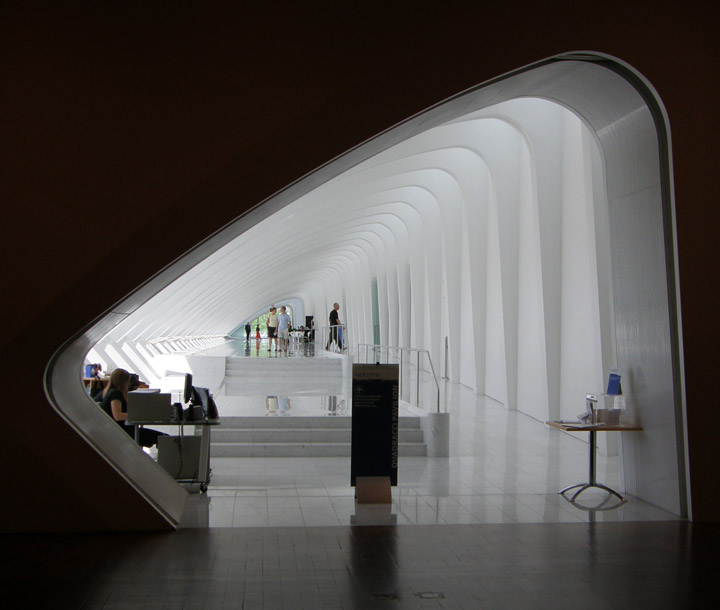
view down the galleria
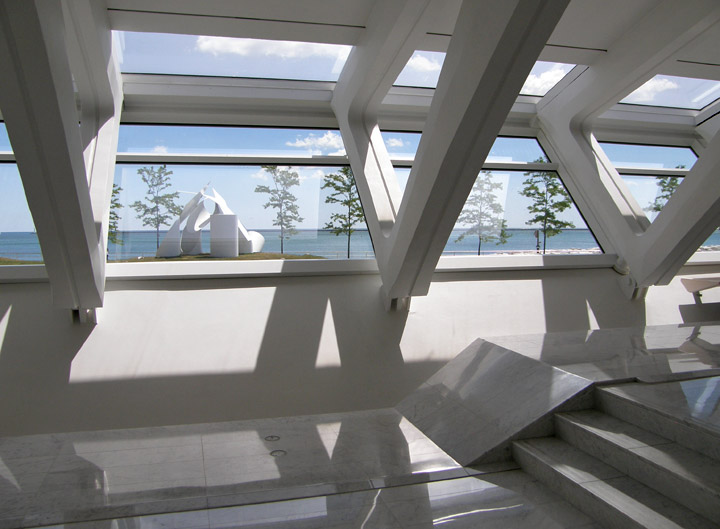
view toward Lake Michigan

Lake Michigan
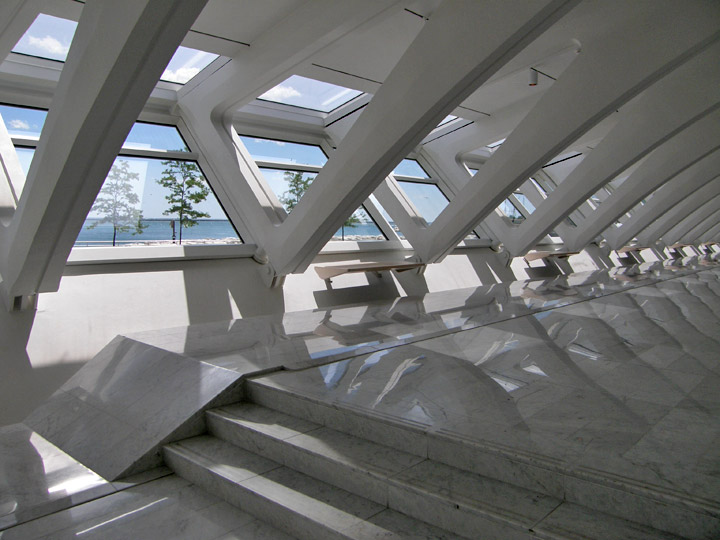
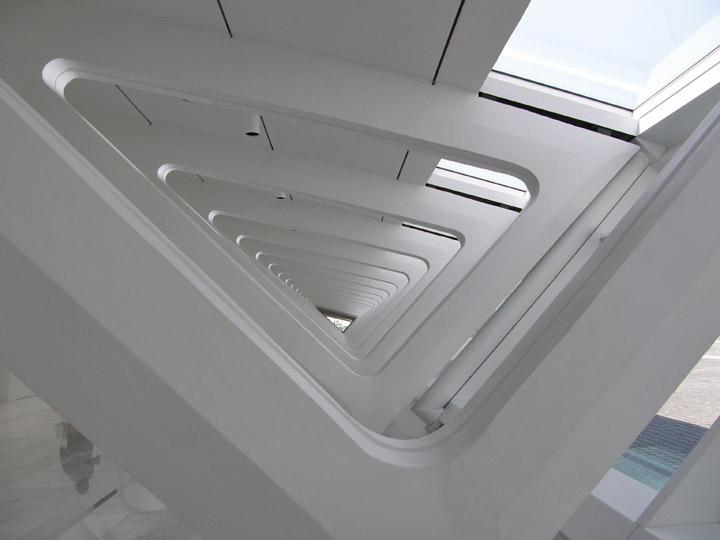
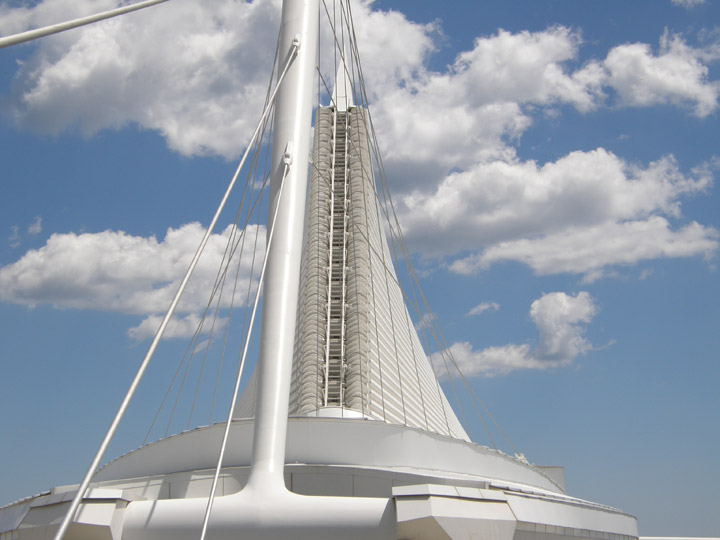
wings closed at noon
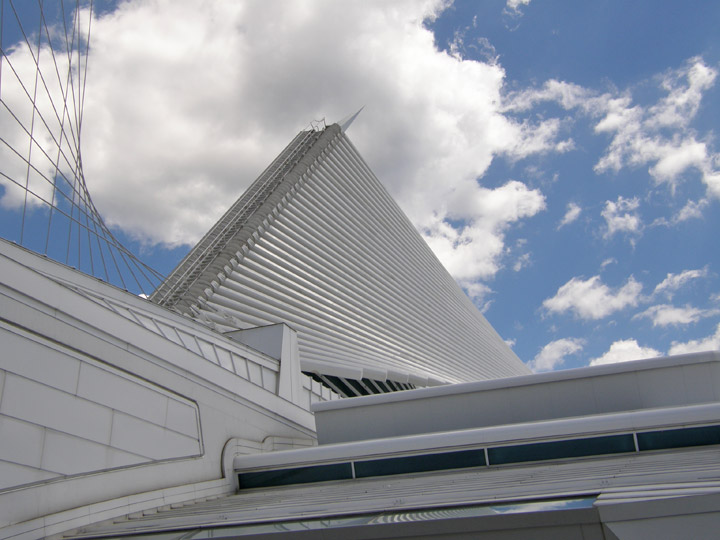
wings opening again

wings extended
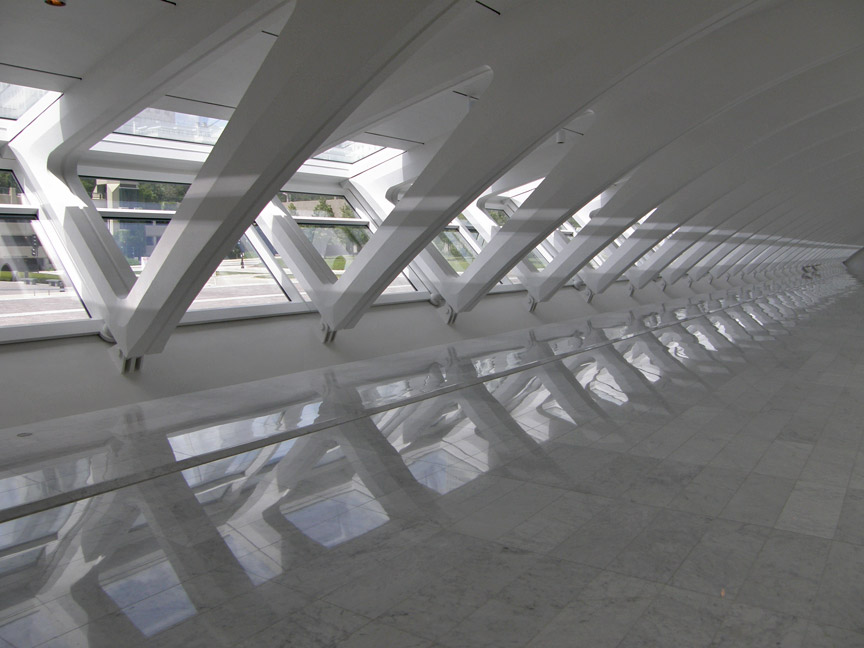
the galleria
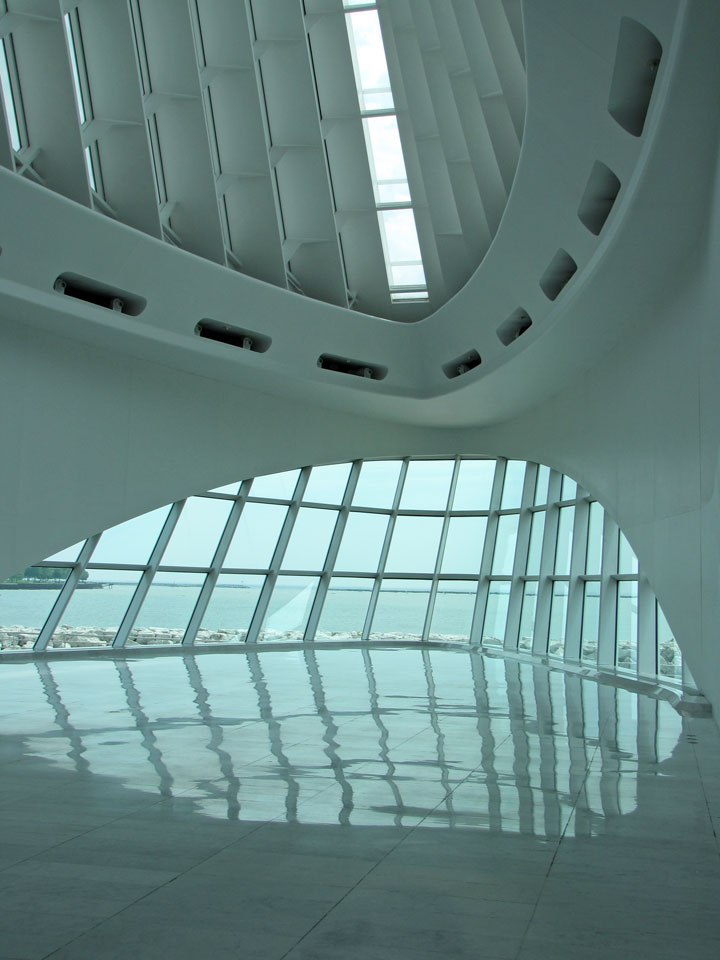
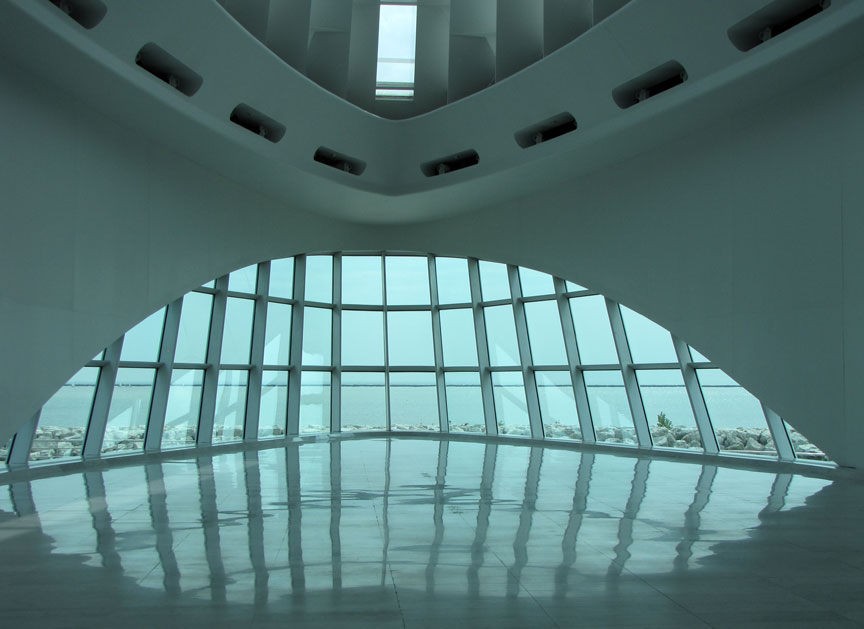
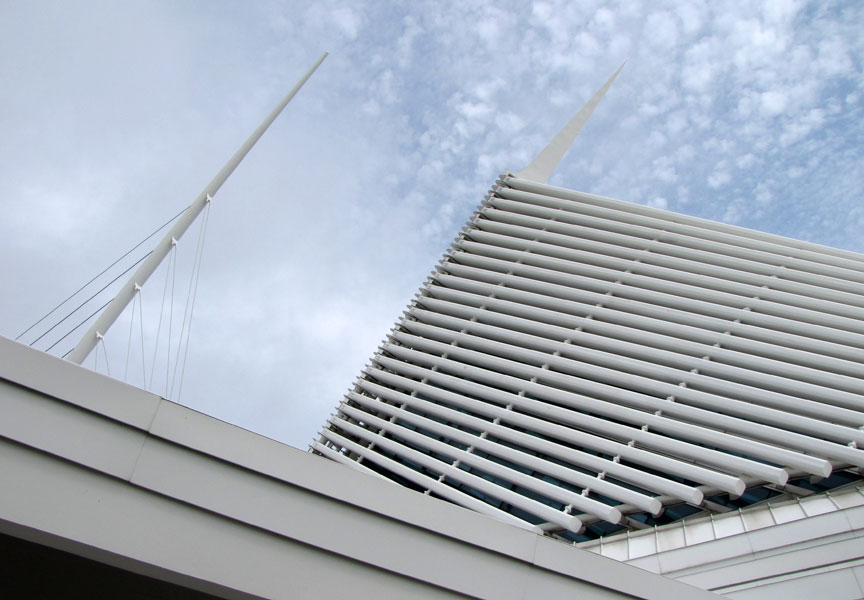
wings closed
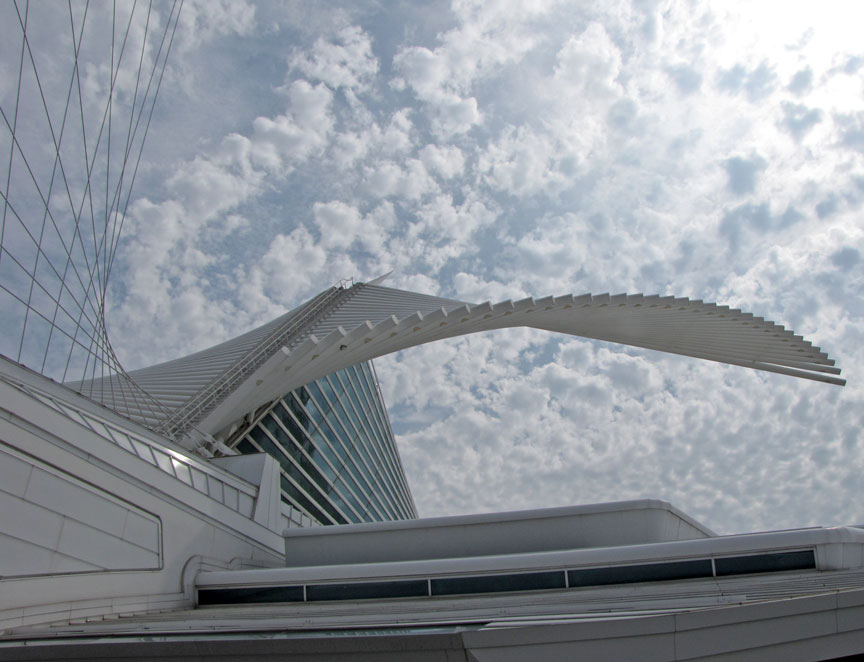
wings open
Return to Milwaukee Art Museum page